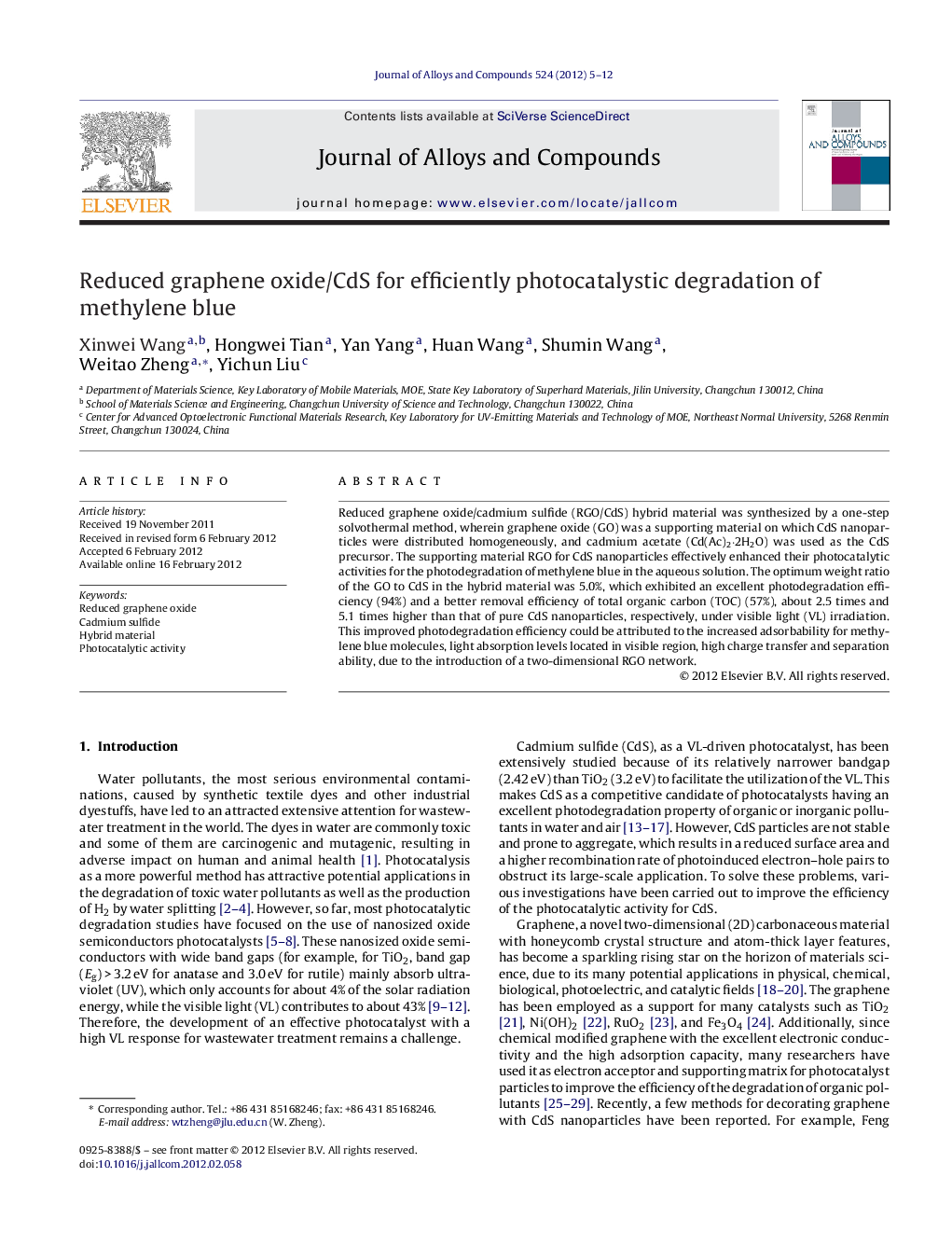| Article ID | Journal | Published Year | Pages | File Type |
|---|---|---|---|---|
| 1616086 | Journal of Alloys and Compounds | 2012 | 8 Pages |
Reduced graphene oxide/cadmium sulfide (RGO/CdS) hybrid material was synthesized by a one-step solvothermal method, wherein graphene oxide (GO) was a supporting material on which CdS nanoparticles were distributed homogeneously, and cadmium acetate (Cd(Ac)2·2H2O) was used as the CdS precursor. The supporting material RGO for CdS nanoparticles effectively enhanced their photocatalytic activities for the photodegradation of methylene blue in the aqueous solution. The optimum weight ratio of the GO to CdS in the hybrid material was 5.0%, which exhibited an excellent photodegradation efficiency (94%) and a better removal efficiency of total organic carbon (TOC) (57%), about 2.5 times and 5.1 times higher than that of pure CdS nanoparticles, respectively, under visible light (VL) irradiation. This improved photodegradation efficiency could be attributed to the increased adsorbability for methylene blue molecules, light absorption levels located in visible region, high charge transfer and separation ability, due to the introduction of a two-dimensional RGO network.
Graphical abstractFigure optionsDownload full-size imageDownload as PowerPoint slideHighlights► One-step solvothermal route to RGO/CdS hybrid materials. ► The hybrid materials exhibit an enhanced photocatalytic degradation activity for MB. ► The optimum loading amount of RGO is 5.0 wt%. ► The RGO retards the charge recombination of CdS enhancing the degradation efficiency.
